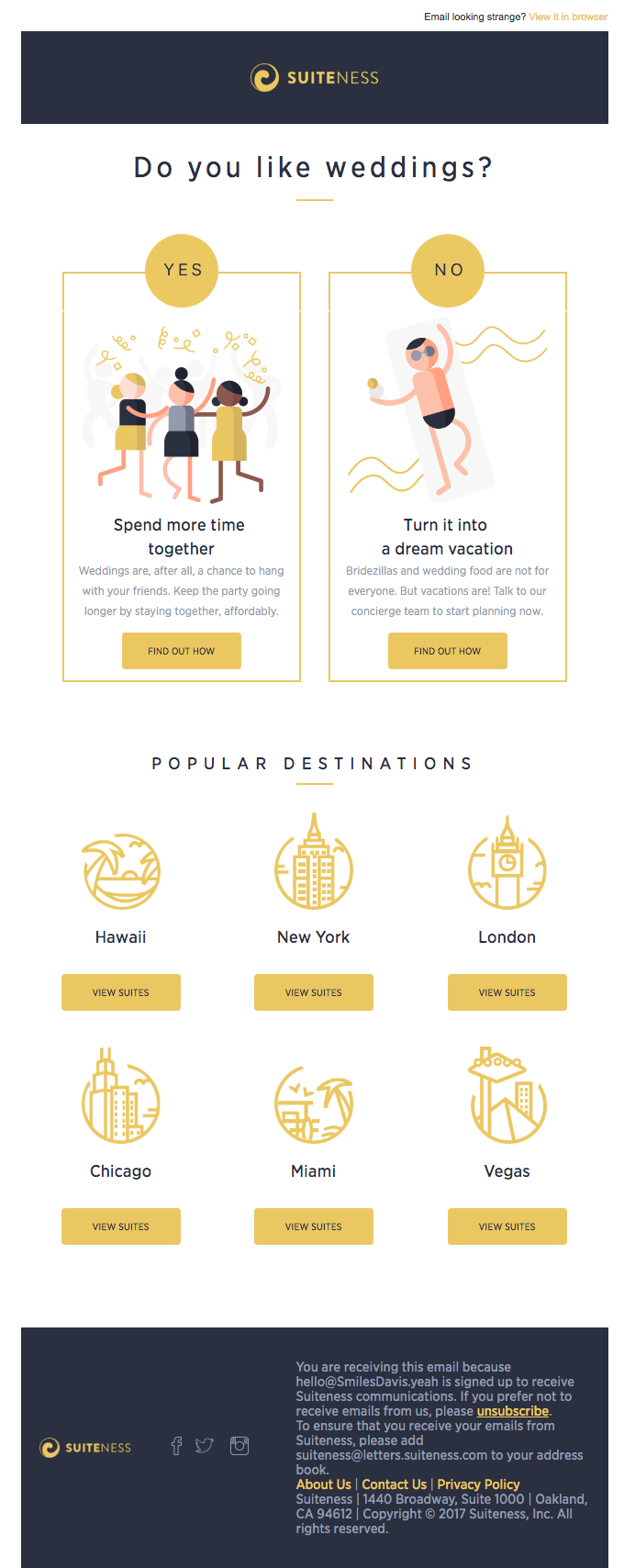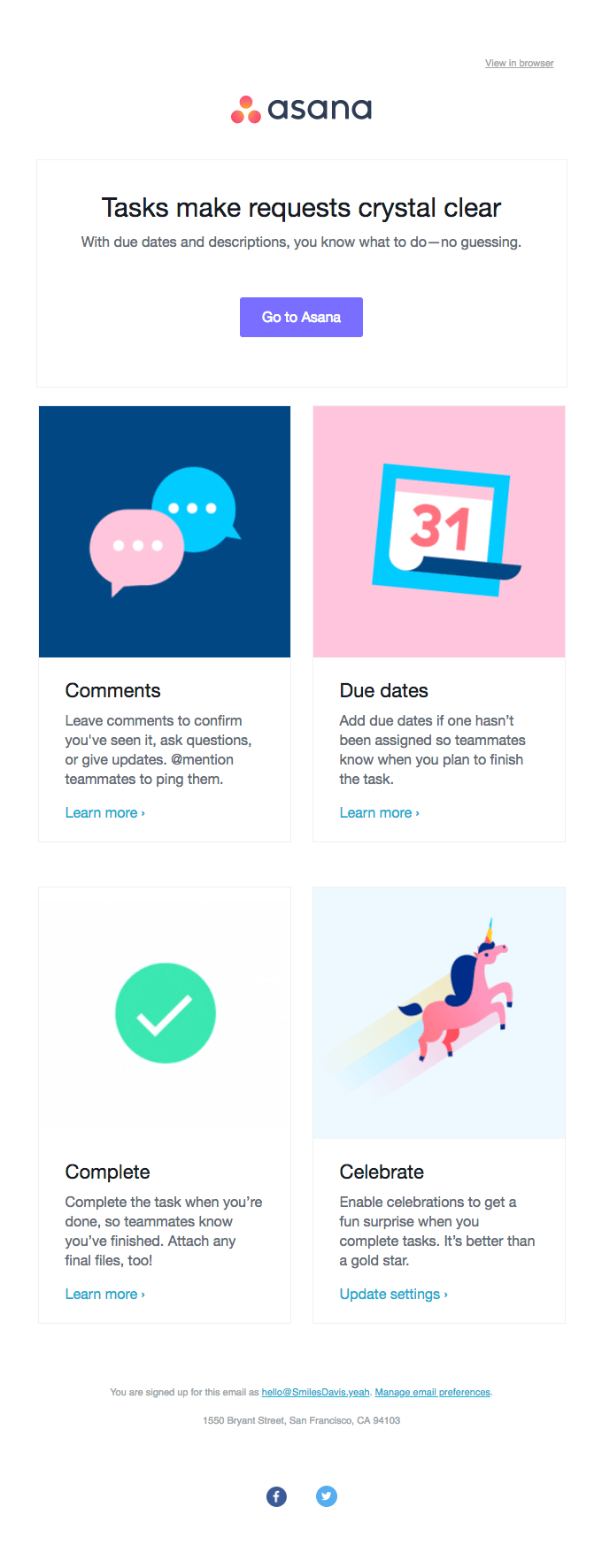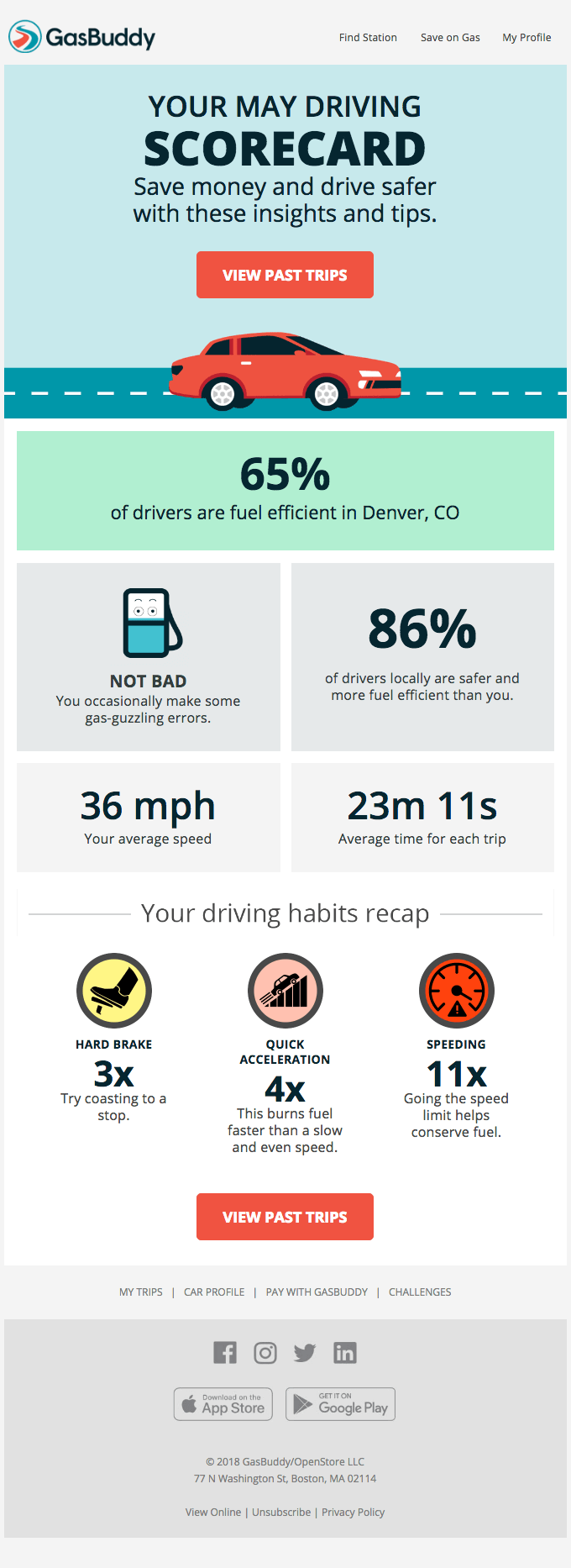How to build a “strategy-first” email marketing program
You remember that old school email excitement—turning on your dial-up internet and patiently waiting to hear those three beloved words: “You’ve got mail.”
In the beginning, email was a brand-new experience, and every new message came with a novelty that convinced you to read every word. Over time, the newness wore off, and it became something we fit into our everyday routines.
Now, the excitement rating for reading emails overall ranges from an average pastime to a complete nuisance. But thankfully, it doesn’t have to be this way.
The need for strategy
You see, as more and more people started sending emails, they all thought the same thing: That their message was the only one being read, or at least the most important.
It’s probably true that people used to wait around for emails, but those days are long gone. And not only are those senders wrong about their message being the most important, but it’s also possible that readers are becoming overwhelmed and pivoting to barely reading any emails at all.
Strategy is the key to bringing back readers’ original enthusiasm for email. It’s also what sets your message apart and ensures it will be read.
Email marketing strategy isn’t just about writing copy, designing layouts, and measuring success. It’s about crafting an experience with the goal of nurturing a relationship. In most cases, the relationship between your business and your email subscribers.
Email as an experience
Every email you send is an opportunity to create a negative or positive experience for the recipient.
This can seem initially daunting, knowing that you’re either encouraging a customer to take a step towards or away from your business, but a well-executed strategy can speak louder than, well, words.
The first step to building an email marketing strategy is to be convinced you need one and, hopefully, we’ve made it to that point together by now. While it may feel like sending an email is one singular action, there are several steps and ideas that must be prepared for along the way.
We get it: Email marketing is a fun and user-friendly way to connect with your customers. However, one of the worst things you could do is employ what we like to call a “send-first” strategy: start sending emails and figure out the rest later, which also typically translates to never.
Below, we’ll go step-by-step to shift your perspective from “send-first” to “strategy-first.”
Send-first: Believes success is 5% brand strategy and 95% email.
Strategy-first: Proves success is 95% brand strategy and 5% email.
This is one of the most important distinctions between send-first and strategy-first marketing plans. The email is the end result, a tool used to execute and support your long-term brand strategy. Think of the email as the vehicle used to deliver the goods—the value of your brand.
Send-first: Wants to start sending emails right away.
Strategy-first: Knows to start with a plan.
It’s worth repeating that you need to start with strategy, not sends. To ensure that each of your sends is filled with purpose, responding to a customer need, and going to land in their inbox at just the right time, a big picture and long-term strategy must be in place.
If you’re just getting started, this may seem like a big task to overcome, but at its very core, any email marketing strategy should answer the same questions:
- Who is sending the email?
- How can they help the person receiving it?
You can make your strategy as detailed or general as your time allows and the size of your business requires, but creating an informal mission statement for your email marketing tactics gives you something to continually refer back to as your tactics change and grow.
Send-first: Believes everyone should love their brand and emails.
Strategy-first: Knows the value of a target market.
In a perfect world, everyone would love your brand and emails.
However, top brands in niche markets are now using their uniqueness to their advantage, and your email marketing strategy can too. First, identify your target market:
- Who is most likely to buy your product?
- What problems will it solve for them?
- What else do they care about?
- What is their lifestyle like?
- Why would this person subscribe to your emails?
Once you do that, you can answer other questions specific to email, such as:
- What’s the best time to send them an email?
- What will they be doing when they receive it (in the carpool line picking up their kids, checking their email before bed, on their lunch break at the office)?
- What value could you provide them at that moment?
- What kind of content would make them open an email?
Watch how Suiteness uses varied customer interests and connects them to the same call-to-action:
Send-first: Sends every email to all subscribers.
Strategy-first: Segments their audience into groups.
A send-first approach relies on the “batch-and-blast” strategy, which means they send the same email to every single one of their subscribers.
While this could be a good starting point for some businesses, your sweet spot will be found when you can gather more information about your subscribers and use segmentation in your sends. This means you may divide them into groups based on location, age, or interest.
Once you create individual segments, you can send personalized content to your customers based on their personal preferences. Segmentation and personalization are two of our favorite tricks of the trade, not just because they show off your email marketing skills, but because they are some of the strongest relationship-building tools around.
Fun fact: The New York Times has over 30 email newsletters, each dedicated to unique audiences like college students and runners.
Send-first: Watches their email list grow.
Strategy-first: Plans for their email list to grow.
These two are the difference between a passive email marketer and an active one. When you have an end goal in mind and a strategy for how to get there, success suddenly seems much more attainable.
Including room for A/B testing and experimentation in your email marketing strategy can also help you maximize your email list growth and pinpoint the type of content your subscribers love to receive.
See how Asana uses email to continually remind customers of their product value and available features:
Send-first: Focused only on finding new customers.
Strategy-first: Focused on customer retention.
Returning customers tend to spend 67% more than new customers. Need we say more? Your existing customers have already bought into your product, know who you are, and have identified themselves as your target market.
While you may be tempted to focus only on new leads, the best investment you can make is in the customers you already have.
Send-first: Cares about product sales.
Strategy-first: Cares about customer relationships.
Caring about customer relationships doesn’t mean you forget about product sales—it just forces you to look at them differently. When maintaining a good customer relationship is the end goal, we’ll bet you’ll also make a few business interactions along the way.
See how Gas Buddy provides valuable and personalized information to their customers to show they care:
Send-first: Writes their messages for an inbox.
Strategy-first: Writes their messages for a person.
When writing copy for a large number of subscribers, resist the temptation to change your tone. By remembering that email is still a one-on-one conversation between you and an individual customer and keeping this person in mind while you’re creating email copy, it will feel like a more authentic interaction instead of a promotional ad. If your email includes something you wouldn’t say to a customer face-to-face, nix it.
Send-first: Needs a reason to send an email.
Strategy-first: Creates a reason to send an email.
Your email strategy should be the best of both worlds—taking into consideration company promotions, customer birthdays, and local events, but also setting a regular email pace that customers can anticipate. This means using automation to meet customers at different points of their purchase journey while also providing them with regular content that’s educational, entertaining, or newsworthy to engage with.
Send-first: Wonders what the future holds for email.
Strategy-first: Tracks their success and refines their strategy.
A strategy-first email marketing plan determines important analytic benchmarks, goals, and ideas for improvement. By continuing to test methods and remaining open-minded about an ever-evolving strategy, marketers can make small adjustments to the plan along the way instead of waiting for overall campaign results to determine success.
Wrap up
Regardless of your email goals or volume, your first step toward success is to begin with a solid strategy. Becoming a strategy-first email marketer won’t happen overnight, but putting intentional thought behind each of your actions will get you there in no time.
More often than not, customers can subconsciously tell whether or not an email in their inbox is backed with researched strategy, and at the same time, it’s what can also make a brand feel more approachable and genuine. And, it may be just the thing to bring back that “You’ve got mail” kind of joy.
MOST RECENT ARTICLES
Want to engage your audience and grow your brand? Try Emma's robust easy-to-use product today.
















